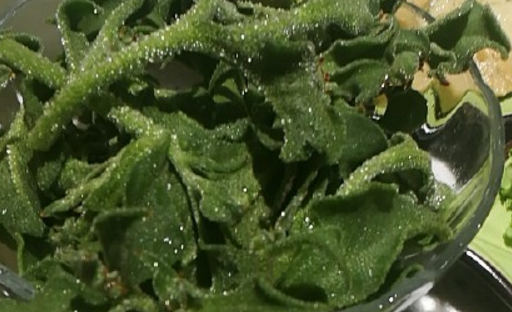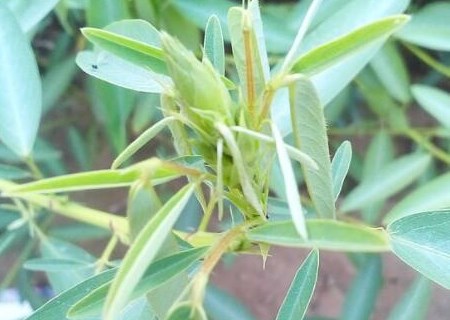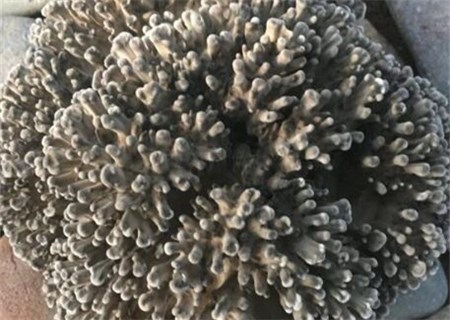Saline alkaline plant African wheatgrass breeding methods and precautions? How to plant seeds? What's the value?
African wheatgrass, also known as ice vegetable, ice leaf sunflower, so the cultivation methods and points for attention of African wheatgrass? How do you plant seeds? What are the values? It is understood that African wheatgrass is a kind of saline-alkaline plant, and its cells contain salt, so it has some salty taste when it is eaten. Many people eat it as a vegetable and it can be eaten raw.

I. the culture methods and matters needing attention of African wheatgrass?
Temperature
The suitable growth temperature of African wheatgrass is about 20 Mel / 30 ℃, which is relatively cold-tolerant, but the cultivation and growth in summer is sensitive to high temperature.
Watering
African wheatgrass has drought-tolerant growth characteristics, irrigation should wait until the soil surface is dry, at the same time pay attention to drainage on rainy days.
Soil
African wheatgrass is more resistant to barren, whisker root, and dense, with the characteristics of sand accumulation and deep soil, is an excellent soil and water conservation plant and sand-fixing plant, often seen in dry grasslands, hillsides, hills and sandy land.
Colonization
The suitable planting time is usually about 20-40 days after sowing, and 5 leaves of 4muri are produced. Direct seeding can also be carried out according to the origin. If you want to improve the rate of beautiful products or long-term harvest, it is suitable for seedling cultivation.
Note:
Harvesting method
When harvesting African wheatgrass, scissors should be used to spread, and the main harvest is the side branches about two months after sowing. In addition, it should be stored at low temperature during transportation, or transported when the temperature is low in the morning, and pre-cooling should be carried out after harvest.
Second, how to plant seeds?
1. Selection and treatment of seeds
The choice of seeds is relatively easy. When we choose seeds, we should choose those seeds that are not affected by disease and have no signs of moth, rather than those that are too dry. After selecting the seeds, it is not immediately possible to sow the seeds, we have to go through some treatment to improve their probability of germination. We can soak the seeds in warm water of about 20 to 30 degrees. It doesn't take too long, just two to four hours.
2. The choice of time
As for time, there is no strict requirement, but if sowing in summer, because the seeds are sensitive to high temperature, too high temperature may affect the germination rate, so the temperature needs to be specially controlled.
3. Sowing and management
First, sow the seeds at intervals of about nine centimeters. After sprinkling, you need to cover it with a layer of soil, and be careful not to cover it too much, because if the soil layer is too thick, it will not help the seeds to break the soil. In addition, the temperature also needs to be adjusted, about 20 degrees Celsius is the best. If sowing in a relatively low temperature season, some heat preservation measures need to be taken. If the seeds are sown when the summer temperature is high, some cooling measures will have to be taken. Also, ventilation is also very important.
Third, what is the value?
1. The edible value of African wheatgrass.
The properties of African wheatgrass are saline-alkaline plants, which generally grow on the edge of the coast. We all know that sea water is an important source of salt extraction, so the taste of this plant is a little salty for everyone. At the beginning, it was only eaten by people in Europe, and it was not until later that it was gradually introduced into China. There are some nutrients in general green plants, and this kind of African wheatgrass also contains, such as some amino acids and anti-acidizing substances, the content of African wheatgrass is still quite high, so the usable value of African wheatgrass is quite high and is now widely eaten by people. African wheatgrass can be seen in restaurants and family dishes.
2. The nutritional value of African wheatgrass.
African wheatgrass contains the most substances are amino acids and some anti-acidification organic matter, these are essential nutrients in our daily life, the growth environment of African wheatgrass is very difficult, the growth vitality is very tenacious, so it is very normal to contain a high content of organic matter, we usually feel a trace of sour taste when eating. This sour taste is nothing else, it is the malic acid contained in African wheatgrass. In addition to organic matter and malic acid, African wheatgrass also contains a lot of carotene and many other minerals, which combines the characteristics of a variety of plants. It is a plant with high nutritional value.
Time: 2019-03-16 Click:
- Prev

Butterfly flower subfamily dance grass bonsai how to raise? What are the common diseases and insect pests and their control methods? How much is it per pot?
Dancing grass, a kind of dancing grass, dances like a butterfly fluttering its wings in the air, or a dancer with relaxed arms on the stage. So do you know how to raise dancing grass bonsai that can dance? What are the common diseases and insect pests and their control methods? How much is it per pot? In Yunnan flower market, we learned that
- Next

What are the planting methods of chestnut mushroom (scientific name Grifola frondosa)? What is the effect and effect? How do you cook it?
Chestnut mushroom is rich in amino acids, protein and other trace elements. With mushroom-like aroma, tender meat, taste like shredded chicken, crisp like magnolia. So do you know the planting methods of chestnut mushrooms? What is the effect and effect? How do you make it delicious? What are the planting methods of chestnut mushroom
Related
- Fuxing push coffee new agricultural production and marketing class: lack of small-scale processing plants
- Jujube rice field leisure farm deep ploughing Yilan for five years to create a space for organic food and play
- Nongyu Farm-A trial of organic papaya for brave women with advanced technology
- Four points for attention in the prevention and control of diseases and insect pests of edible fungi
- How to add nutrient solution to Edible Fungi
- Is there any good way to control edible fungus mites?
- Open Inoculation Technology of Edible Fungi
- Is there any clever way to use fertilizer for edible fungus in winter?
- What agents are used to kill the pathogens of edible fungi in the mushroom shed?
- Rapid drying of Edible Fungi

